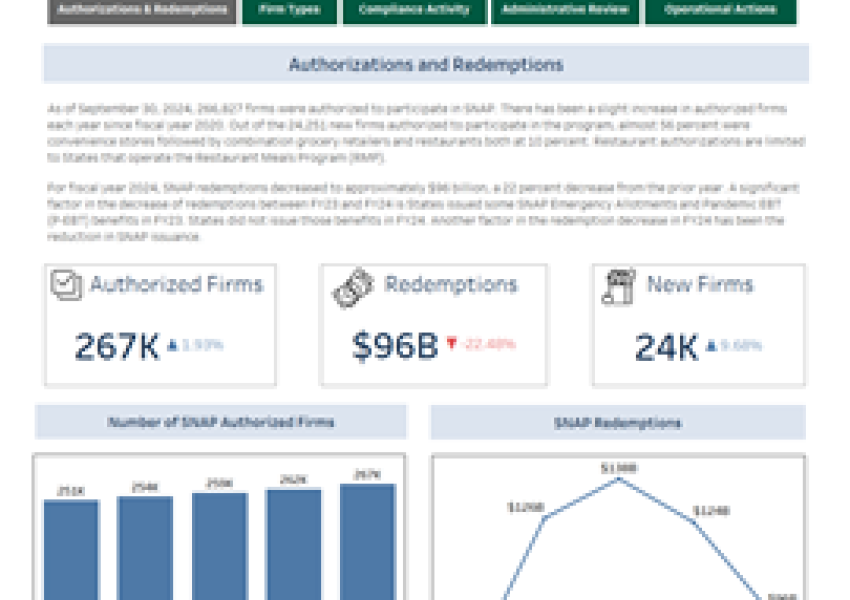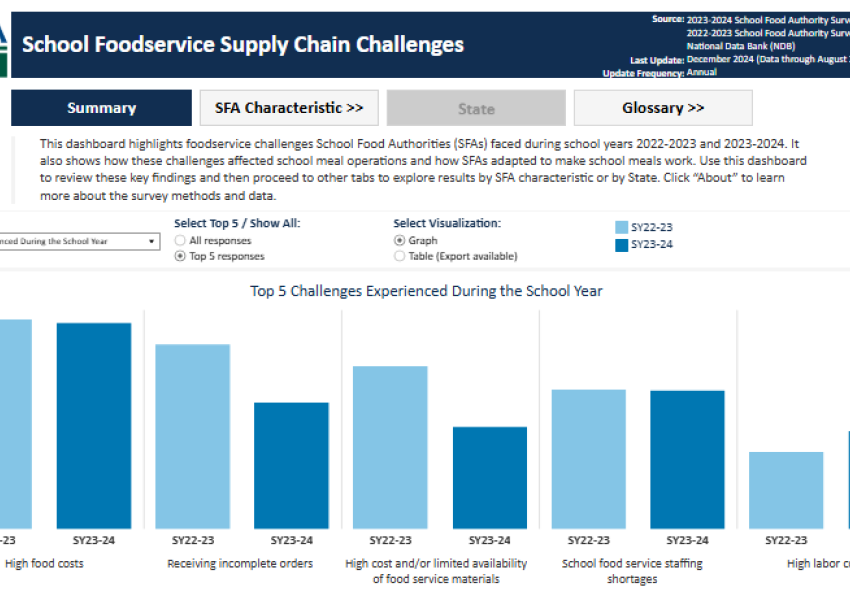FNS regularly conducts research and data analysis to inform program or policy decisions and understand nutrition program outcomes. In addition, FNS seeks to make data accessible to state and local agencies, service providers, and the public by developing data visualization and analytics tools that can be used to support nutrition program delivery or report on outcomes.
The below data visualization and analytics products bring together FNS, USDA, and other federal datasets to answer questions related to food security, nutrition assistance programs, and the systems that support them. Dashboards include “about” or “information” pages to answer questions about navigation, interactive functionality, data sources, and the data transformations that have been applied.
School Foodservice Supply Chain Challenges Dashboard
This dashboard visualizes key challenges School Food Authorities faced during school year 2023-2024 based on findings from the 2023-2024 School Food Authority Survey III on Supply Chain Disruption and Student Participation.
12/18/2024
Child Nutrition Dashboard
The goal of the dashboard is to provide national and state level visualization of meals served, participation, and funding data for the National School Lunch Program, School Breakfast Program, Child and Adult Care Food Program, and Summer Food Service Program. The dashboard can be used by federal, state, and local organizations to assess trends in child nutrition program activity.
02/14/2024
SNAP Replacement of Stolen Benefits Dashboard
This dashboard displays state-reported data provided to FNS in accordance with the January 2023 guidance on the replacement of stolen EBT benefits with federal funds. All data provided to FNS will be posted here quarterly, as soon as possible following receipt.
10/27/2023
Page updated: March 14, 2024







